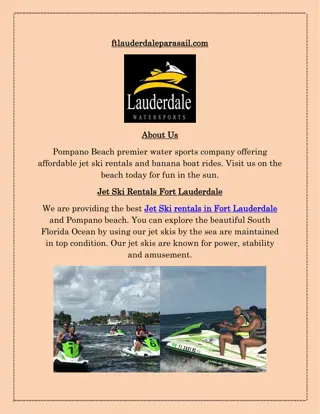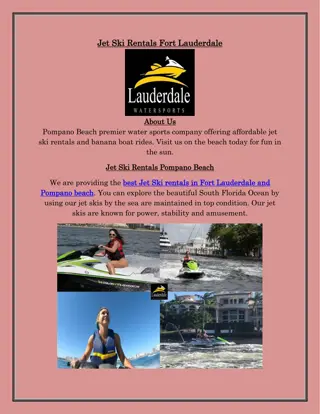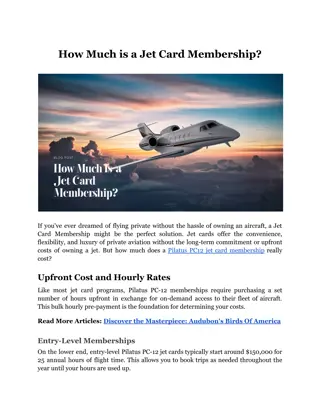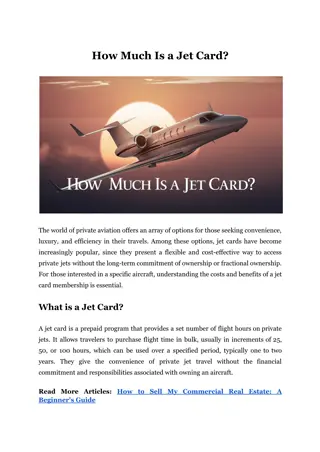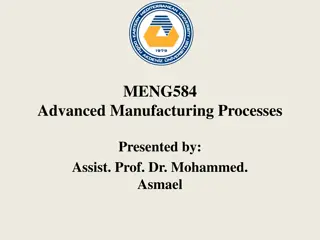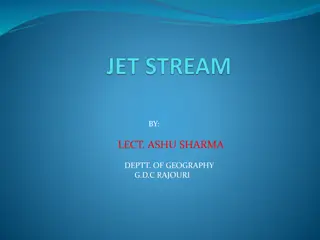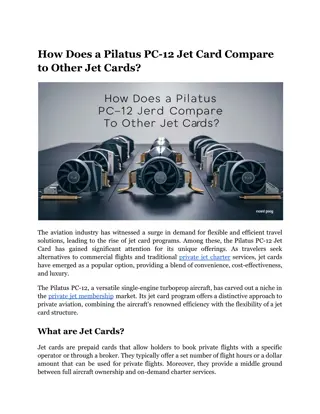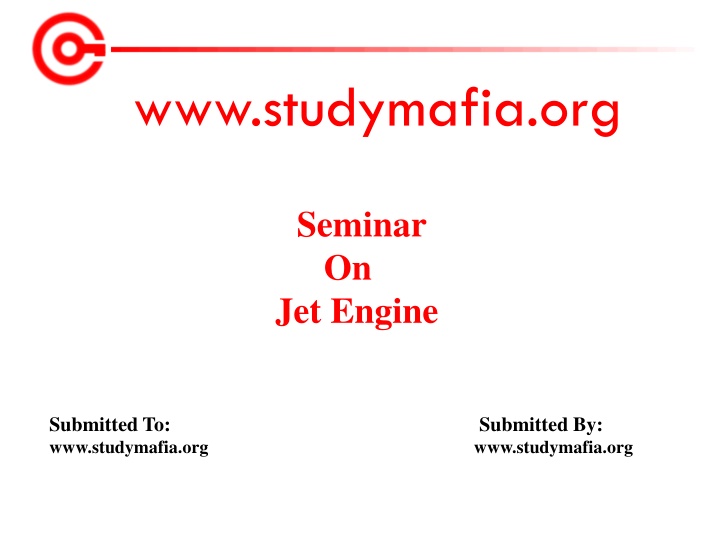
Exploring the Fascinating World of Jet Engines
Discover the evolution, principles, components, and workings of jet engines, from ancient Egypt to modern-day technology. Learn about different types, comparisons, challenges, and future improvements, all compiled in a comprehensive seminar.
Download Presentation

Please find below an Image/Link to download the presentation.
The content on the website is provided AS IS for your information and personal use only. It may not be sold, licensed, or shared on other websites without obtaining consent from the author. If you encounter any issues during the download, it is possible that the publisher has removed the file from their server.
You are allowed to download the files provided on this website for personal or commercial use, subject to the condition that they are used lawfully. All files are the property of their respective owners.
The content on the website is provided AS IS for your information and personal use only. It may not be sold, licensed, or shared on other websites without obtaining consent from the author.
E N D
Presentation Transcript
www.studymafia.org Seminar On Jet Engine Submitted To: www.studymafia.org Submitted By: www.studymafia.org
Index 1. Introduction 2. History of jet engine 3. Parts of jet engine 4. How a get engine works 5. Types of jet engine 6. Comparison of Turbo Jet 7. Jet engines Vs Rockets 8. Difficulties 9. Suggestion for improvement 10. Merit and Demerits 11.Jet engine uses 12.Conclusion 13.References
introduction Jet engine is nothing but a gas turbine. It works under the principle of Newton's 3rd law. it stats that for every acting force there is an equal and opposite force . Gas turbine operates like toy balloon.
History of jet engine The first jet engine was built by Egyptian scientists during 100 BC. These device was know as Aeolipile. Dr.hans von ohain and sir frank whittle were the main developers.
Parts of jet engine Fan Compressor Combustor Turbine Mixer Nozzle
How a jet engine works Jet engine move the airplane forward with a great force that is produced thrust and cause the plane to fly very fast. Fuel Burner Fuel is mixed with the air , and electric spark light the air, cause it to combust. Air intake Sucked in by the compressor. Compressor series of vanes and stators. The vanes rotate, while the stator remains stationary. Compressor speed and temperature increases gradually . Combustion chamber The air is burst. Increase in the temperature of the air, thus increase in pressure inside the engine.
Continued. Turbine Works like a windmill The blades gain energy from the hot gassed moving past them. This movement is used to power the compressor. Jet pipe and propelling nozzle the hot air rushes out the nozzle. High pressure Hot air russes out at very high speed.
TYPES OF JET ENGINE Ramjet Turbojet Turbofan Turboprop Turboshaft
RAMJET It has no moving parts. Its compression ratio depend upon forward speed. It has no static thrust. Guided-missile system , space vehicle use this type of jet.
Turbo Jet The turbo engine is a reaction engine . Substantial increase in thrust can be obtained by employing an afterburner.
Turbofan The objective of the sort of bypass system is to increase thrust without increasing fuel consumption. It achieves this by increasing the total air-mass flow and reducing the velocity within the same total energy supply
Turboprop A turboprop is a jet engine attached to a propeller. Modern turboprop engine are equipped with propeller that have a smaller diameter but a large number of a blades for efficient operation at much higher flight speed.
Turboshaft It doesn't have a propeller. It provide power for a helicopter rotor. It permits the rotor speed to be kept constant even when the speed of the generator is varied.
Jet Engine Vs Rockets Jet Engine Rockets Oxygen from atmosphere for combustion. Carry their own for combustion. Work only in atmosphere. Work in vacuum and atmosphere. Liquid fuel. Liquid and solid fuel. Complex structure. Simple structure. High efficiency. Low efficiency.
Suggestion for improvement Employ activecooling. Designing better materials and alloys which retain strength at high temperature . Smart structures Structure and material which changes their shapes and properties in flight. Design engines which switch from scramjet to ramjet.
Merits and Demerits Merits of jet engine over IC engine Demerits of jet engine over IC engine Mechanical efficiency of jet engine is high as compared to IC engine. Thermal efficiency of jet engine is low compared to IC engine. Difficult to start. Weight and speed of jet engine per HP developed is higher then IC engine. Turbine blades need a special cooling system due high temperature. Ignition and lubricating system are much simpler in jet engine then IC engine.
Jet engine uses The industry they re most prominent in is the transport industry ,where they are used to propel aircraft, boats, and in some one of creations such as a turbojet power truck. The first use of the jet engine was to power military aircraft. The Bell P-59A Airacomet was also developed by the Americans. They had a massive advantage over propeller driver planes , in that they were much faster. The General electric company used a turboprop jet engine to run an electric generator. The jet engine is not only used on aircraft but on boats , where water jet are used to propel the boat forward
Conclusion Normal type of jet engine is used to domestic purpose i.e. Traveling , carrying goods etc. Ram and scram type of jet engine used in only in defence sector. Because it travels at supersonic speed and generally high level of training is required. Since it travels at such a speed it is can not used for travelling. So that common type of jet engines are very common in use.
References www.google.com www.wikipedia.com www.studymafia.org



